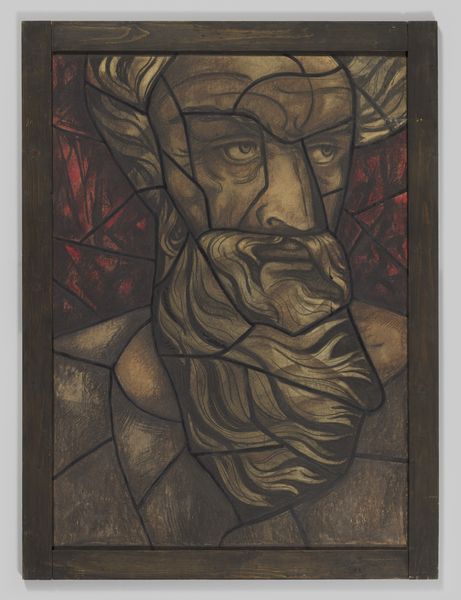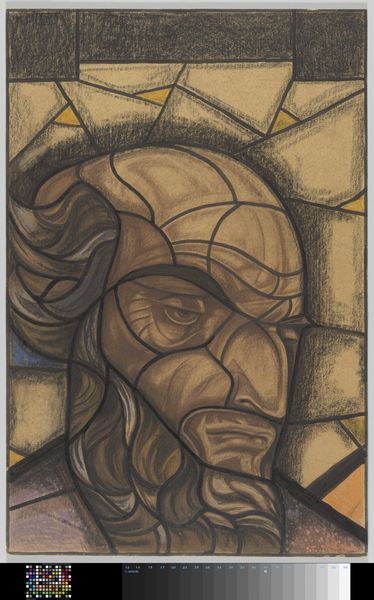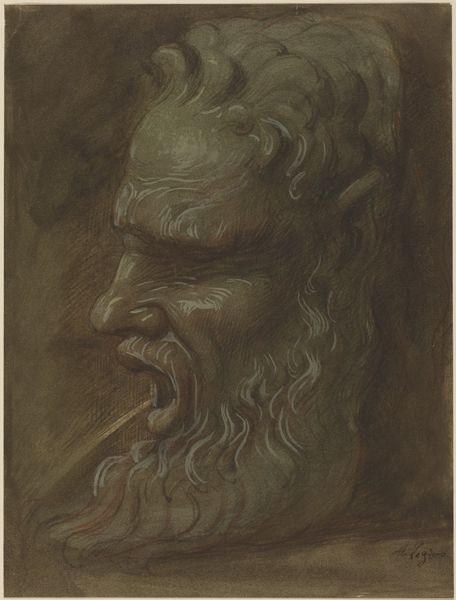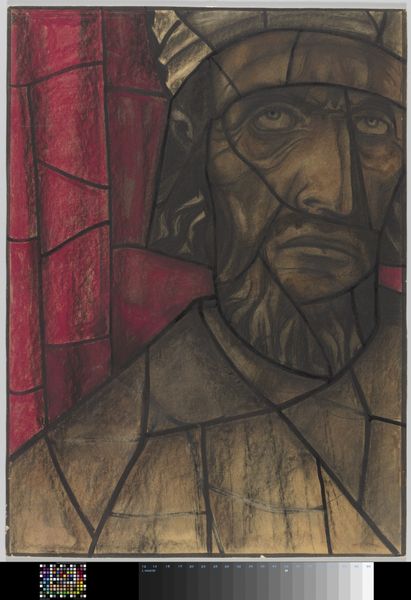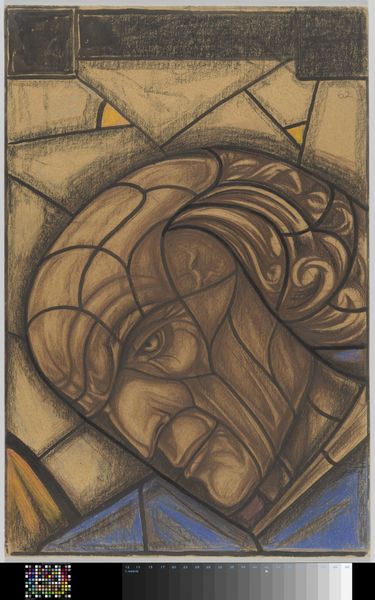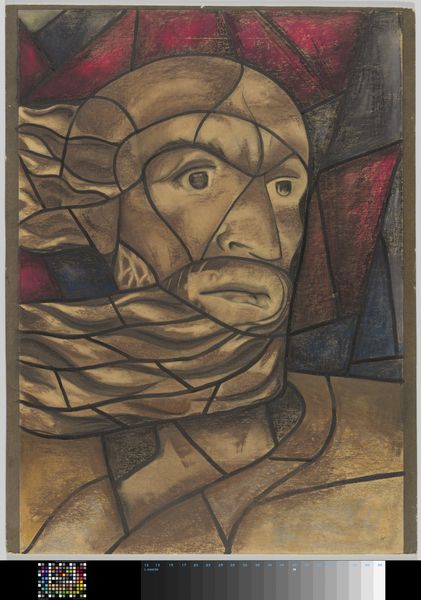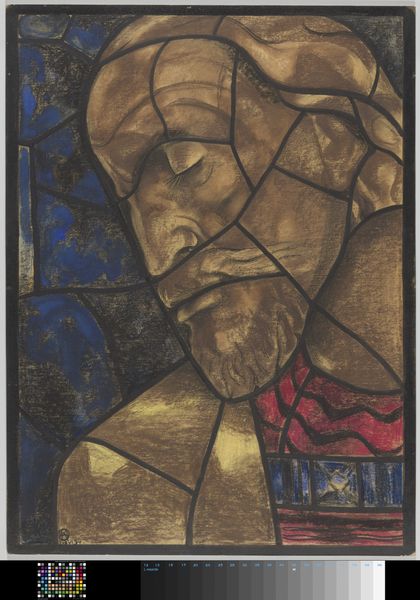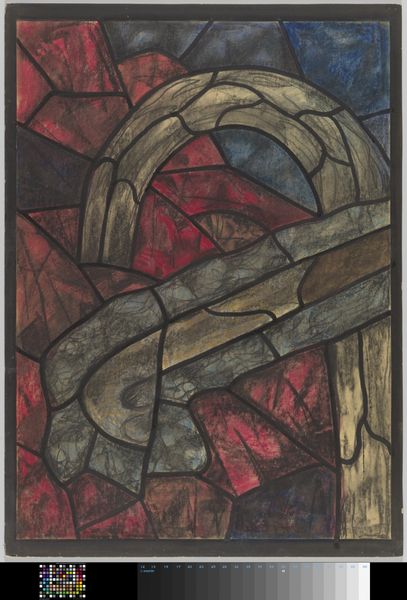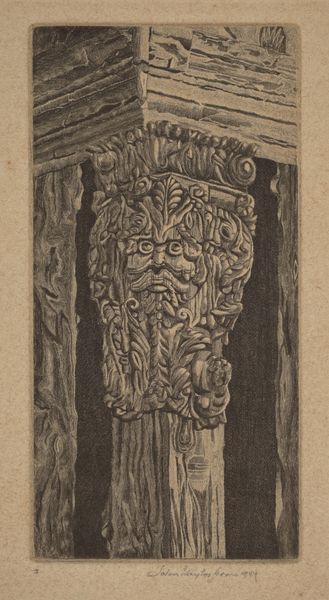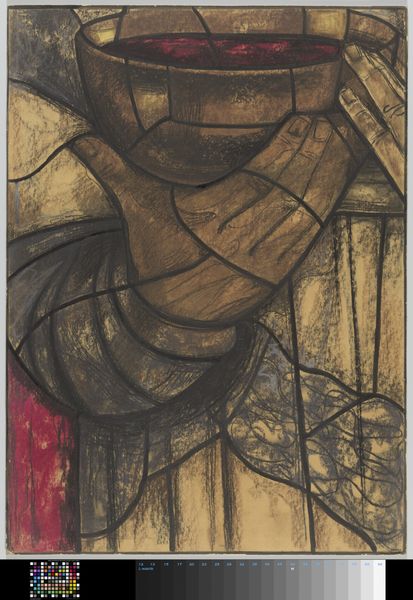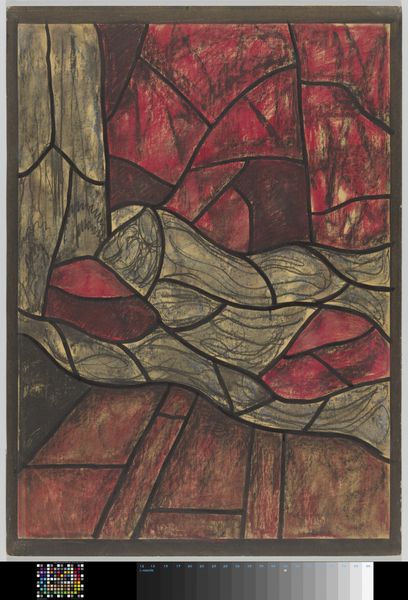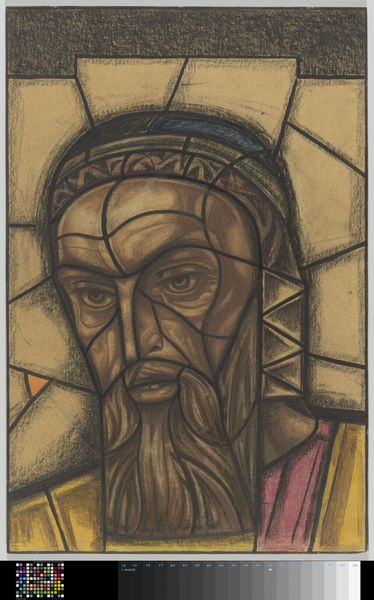
Ontwerp voor raam in het Noordertransept in de Dom te Utrecht c. 1934
0:00
0:00
drawing, paper, pencil
#
portrait
#
drawing
#
toned paper
#
medieval
#
figuration
#
paper
#
mural art
#
handmade artwork painting
#
pencil
#
line
#
mixed media
#
realism
Dimensions: height 1100 mm, width 830 mm, height 1067 mm, width 778 mm
Copyright: Rijks Museum: Open Domain
Curator: The somber gaze and fractured composition in this drawing by Richard Nicolaüs Roland Holst give it an almost unsettling feel. Editor: I can see that. Holst’s “Ontwerp voor raam in het Noordertransept in de Dom te Utrecht,” or "Design for a window in the North Transept of Utrecht Cathedral", from around 1934, immediately brings to mind questions about religious iconography and its impact. Look closely and consider how the window, as both art object and architectural component, functions within a specific cultural and political landscape. Curator: Definitely. The lines dividing the image appear as the lead framework of stained glass. Holst was interested in merging art with craftsmanship, so this integration makes complete sense when thinking about its creation, a combined use of pencil and mixed media on toned paper. I find myself reflecting on the labor involved in creating this window if it had come to fruition: the glass blowing, leading, installation. Editor: It also asks how we negotiate sacred spaces through gendered and racial lenses. Who is this figure, and how might his depiction reinforce or challenge power structures of the time? Was Holst intending to convey that he, as an individual, would fit into those ideas? What of people excluded from its perceived, exclusive space? Curator: Good point, though, the choice of toned paper perhaps mediates that intensity somewhat? Also the almost mosaic style. It hints to me about an echo from earlier times. The use of distinct lines seems very specific, a design choice almost entirely absent now in digital art. Editor: These kinds of designs become particularly fascinating in our context, then. Where Holst stood ideologically compared to our world now seems very complex when considering that identity and religion, gender and power, remain points of intersection and tension. Curator: Exactly! And seeing it in this more humble, material form -- pencil and paper rather than radiant colored glass -- reminds me how such powerful images began with human hands and choices, both technical and artistic. Editor: Perhaps understanding how artworks participate in and comment on political struggles might also inspire new avenues for change today.
Comments
No comments
Be the first to comment and join the conversation on the ultimate creative platform.
